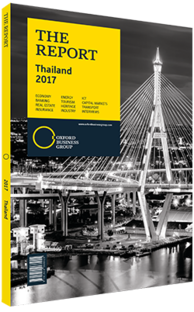Arkhom Termpittayapaisith, Minister of Transport: Interview

Interview: Arkhom Termpittayapaisith
What major ground transport upgrades are current priorities for government spending?
ARKHOM TERMPITTAYAPAISITH: Thailand has lagged behind in terms of planned infrastructure upgrades in air, sea and ground transport over the past 10-20 years, so investment in all modes of transport is critical. That being said, around 85% of the nation depends on ground transport as the primary mode by which to move both people and goods. Therefore, over the past two years the administration has focused heavily on investing in the national railway system to address this imminent need, and this investment will continue in the short term.
Around the turn of the century, the mass rapid transit (MRT) system made its welcome debut in Bangkok, with the MRT Blue Line commencing operations in 2004, followed soon afterward by the MRT Green Line and the Skytrain in 2009. As of August 2016, the first substantial expansion since that time has come on-line with the launch of the MRT Purple Line, a route that will provide a connection between the Bang Bua Thong District in Nonthaburi Province and the Bang Sue District in Bangkok.
The current focus in regard to urban rail transport is to complete the Cabinet-approval process so that construction may eventually start on all 10 of the lines proposed in the government’s masterplan, beginning with the intercity lines within Bangkok and extending outward into the suburbs.
Beyond the metropolitan area, two substantial rail projects are under way with international cooperation. The first project is a railway from Bangkok to Nong Khai, on the border with Laos, which is being developed with Chinese cooperation, and the second is a high-speed railway extending from Bangkok to Chiang Mai, which is being developed in cooperation with Japanese expertise. A third line will connect the capital with eastern provinces in which special economic zones are placed, and a fourth will cover the short distance between Bangkok and Hua Hin District. The new technology that is currently being channelled into these developments will reduce travel times by half, and achieve speeds of between 300 and 350 km per hour (km/h).
To what extent does international cooperation in transport development highlight Thailand’s increasingly important regional trade role?
ARKHOM: Thailand’s trade ties with partners in the ASEAN Economic Community, China, Japan and elsewhere continue to strengthen year-on-year, in large part due to the nation’s central geographic location with regard to all modes of transport. Therefore, international cooperation in developing Thailand’s infrastructure is for mutual trade benefit, as well as the technological capacity and knowledge that these trade partners possess.
With regard to China, it serves as perhaps the most significant trade partner for Thailand, with trade volumes growing significantly each year, both in terms of goods and services, and tourism. This growth has proven to be sustainable even without the completion of proposed rail connections, however the development of such infrastructure will only serve to further facilitate this positive trend. Indeed, the railway project being developed with Chinese cooperation connects the capital to northern areas, with intended linkages to Laos and southern China, which will strengthen China’s trade not only with Thailand but also with ASEAN in its entirety.
Japan has also been a traditionally strong trade partner of Thailand, with a large number of its corporations operating within the industrial zones spread out around Bangkok and further afield. Furthermore, the Japanese are world-renowned specialists in terms of high-speed railway developments, and this will mark the first time that Japanese technology has been used outside of Japan in this field.
You have reached the limit of premium articles you can view for free.
Choose from the options below to purchase print or digital editions of our Reports. You can also purchase a website subscription giving you unlimited access to all of our Reports online for 12 months.
If you have already purchased this Report or have a website subscription, please login to continue.

